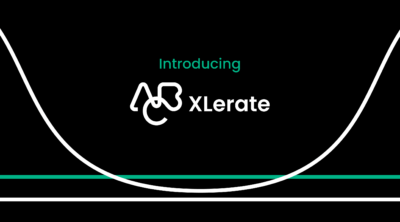Fitness accountability has always been the cornerstone of a successful fitness business. No matter what fitness level the member is currently at, accountability keeps them in check, keeps them focused, and clears the pathway to success. In today’s world, where the fitness industry has transformed considerably in the last year, fitness accountability has never been more critical.
The reason for this is the rise of digital-only competition. Not only have the likes of Peleton and Mirror increased their market share, but fitness influencers have also established fitness programs to cater to people during the lockdown. However, the one key differentiator that you have over these brands is that you can keep your members accountable and invest time to help them reach their goals.
At the heart of accountability is one important factor – regular communication. Consider a study that was conducted a couple of years ago. IHRSA’s Member Retention Report in 2017 threw up some interesting statistics around member retention and member interaction. For one, it found that 90% of members say they value regular communication from their gym. For another, it discovered that every two interactions a gym have with their members reduce the risk of that person churning by 33%.
If this doesn’t back up the absolute need to keep your members accountable, I don’t know what does. But while it’s all well and good pointing out the statistics behind accountability, how do you do it, and what is the exact way to ensure you are successful? Let’s look at answering these questions in the rest of this article.
Skip ahead to:
- Why Is Accountability Important in Fitness?
- The Importance of Accountability During Lockdown
- How Do You Manage Accountability?
- Creating an Accountability Strategy in 4 Steps
Why Is Accountability Important in Fitness?
The statistic in the introduction should make clear the importance of why you need to hold your members accountable. Any way that you can reduce the churn percentage in your gym should always be put into action. Another critical reason why accountability is essential comes from Gym Launch founder and fitness business expert Alex Hormozi. He explained this key and straightforward reason when he joined us on our podcast in the first half of 2020.
According to him, the competitive advantage you hold over digital-only offering is that you can get your members results. Alex makes the critical point that all online workouts are mainly the same. The difference that you can make is that you invest time and effort into making sure the person progresses. Your actions make them stay on that nutrition plan and make them do a workout at least 3 to 4 times a week – depending on their program. Alex puts the whole idea of accountability very simply: “people pay for you to pay attention.”
The Importance of Accountability During Lockdown
Accountability has always been an essential part of keeping retention rates high. And this has never been more vital now. We only have to look at this November report by fitness industry experts Club Intel. Their survey of over 2000 US gym members found that 54% either froze or canceled their memberships in 2020. There could be many reasons for this, ranging from a loss of income to a lack of interest in exercise due to world events. But really, the only reason they have canceled is that they don’t see the value in what the membership offers anymore.
Your job is to communicate and demonstrate this value. And the easiest way to show this value is through accountability. Here are three key reasons why accountability is so important during the various lockdown periods that have occurred and may occur again.
Keep Members Focused
One of the most significant effects of lockdown is the destruction of routine. Instead of going from place to place every day, most are now stuck at home. By sticking to a fitness regime and a workout plan, fuelled by a tailored nutrition plan, people can achieve something with this time. Regular accountability calls will keep them focused on their specific goal.
Temporarily Replace the Accountability Group
There’s no doubt that group training is key to retention. Les Mills has previously found that members who attend at least 3 group classes a week will stay 50% longer in their membership – a significant increase. Your members need that energy that keeps them coming back and the accountability partner they attend with. They are more likely to participate as the group is holding them accountable. You now need to replace that accountability partner until they can return to workout in groups.
Show That You Care
When it comes down to it, we are all humans at the end of the day and are vulnerable to the effects of hard lockdowns at the moment. We talked about how keeping focused on achieving a goal is good for routine. But it’s also useful for their confidence. If you are visibly invested in getting the member the results they want, they will most of the time respond positively and try their best to achieve their goals.
How Do You Manage Accountability?
Metro News did a report recently where they interviewed Sarah Durnford, head trainer at Les Mills UK. In it, she predicts that blended training – a mix of in-studio and at home workouts could be the best way to work out in 2021. This blended or hybrid offering will mean members will have more options. How you keep them accountable, however, remains consistent. Here are two main areas to think about when managing accountability.
Make Clear Goals at the Beginning
Goal setting is a vital part of any success story in all walks of life. Without that destination laid out clearly in front of them, people will become directionless and will likely fail. The reason for this is simple. There is nothing to focus on. There is no improvement identified that takes you from one state to the next. By extension, good accountability and good retention practice are to set goals with the member – even before they become a member. Let’s look at this a bit closer.
Setting goals before the person becomes a member takes place in the sales process. The salesperson should discuss with a potential member what they want to achieve in your gym. This should be a standard part of the selling process as it shows the person straight away that you care about where they want to go on their fitness journey – you aren’t just signing them up and leaving them to their own devices.
Retention expert Dr. Paul Bedford has made the point the one place you may lose the member forever is the handover between sales and onboarding. This gap is where members can feel lost and lose sight of why they joined. Dr. Bedford compares it to who someone may feel after a “one night stand” in some cases! Your onboarding person should have all the critical information from the sales conversation, so when the member sits down with onboarding to make a plan for their goals, the process is seamless.
Map Out the Member Journey
The member journey. It’s a concept that might seem simple in theory in that it’s the journey your member goes through from newly joined to long term membership. In theory, everything is possible, though. When it comes to putting into practice, however, this is where a lot of gym owners can fall short, and it’s vital to getting your accountability practices correct.
Dr. Bedford laid out his playbook for mapping out the customer journey when he joined us on an episode of our podcast. According to him, the first thing you need to is set the member’s expectations based on the types of things they want to achieve. For example, if they are new to fitness, maybe you want to schedule an accountability call with them once or twice a week to ensure they are sticking to their plan and can ask as many questions as they need to. Remember – set out the expectation of communication-based on what the member’s needs are.
The next thing you need to focus on is mapping out the journey from the time they join. Consider what the customer service is at each stage and the emotional experience for the member. Lastly, layer on top what type of communications are needed at each stage – be it SMS, email, or phone calls. The goal is to have some level of accountability at all times and keep the communication lines open – as we stated in the beginning, over 90% of gym members value communication.
The Customer
Engagement Playbook
for Your Fitness
Business
Discover more Creating an Accountability Strategy in 4 Steps
Now that we have gone through what exactly accountability is and how you manage your business, it’s time to look at how you implement this in practice.
1. Start in the Sales Process
Even though you may not have thought about it before, workout accountability starts in the sales process. Depending on what the person’s fitness goals are, you should be able to give them an insight into how you are going to help them achieve what they want. A part of this is giving a general idea of what communication will be like during the person’s membership. You can also gather the information that the onboarding manager can use to make their transition from lead to member as smooth as possible.
2. Make a Plan on Day One
When a member joins, make sure you either set up a call or in person meeting with them within the first week. The reason for this is that you want to establish a plan as early as you can. Remember – don’t leave a gap between sales and onboarding. Take the notes on members from the salesperson who signed them up, so your first conversation with the new member is informed. Set in stone the fitness goals the member wants to achieve and clarify how often they will be contacted and when.
3. Create a Communication Template
In general, you should probably contact the member twice a week. Once after the weekend and once near the end of the week is a suitable schedule. A Monday and then Thursday cadence would be good for this type of communication.
Here is an example of your Monday Message:
Hey [name]
How did your weekend go?
Did you stick with your nutrition plan?
Hit me up if you have any questions.
And here is an example of your Thursday Message
Hey [name]
How is your week going?
Have you got all your workouts in so far?
Remember to send in your progress pics and weight for this week.
Let me know what time suits you tomorrow to have a chat about the week.
With your Thursday message, try and set up a face to face call. Go through any issues the member may have with their fitness goals.
4. Have a Plan to Get the Member Back on Track
A member may inevitably lose focus on their fitness goals and go off track in their journey. It’s unfortunate but a natural thing that happens in the process. Messages aren’t replied to, workouts aren’t being logged, and the last progress photo was a week ago. It happens. The key is to be empathetic with the member to try and understand what the underlying issues are. Consider using a rewards program to incentivize the member to turn up. Member experience expert Chris Stevenson talks about this on our podcast episode, which you can listen to here.
In Summary
Fitness accountability is a necessary action you need to take in your business now that your members are mainly working out from home. Keep open communication lines to ensure that your members get the results they want and keep their membership long term.















